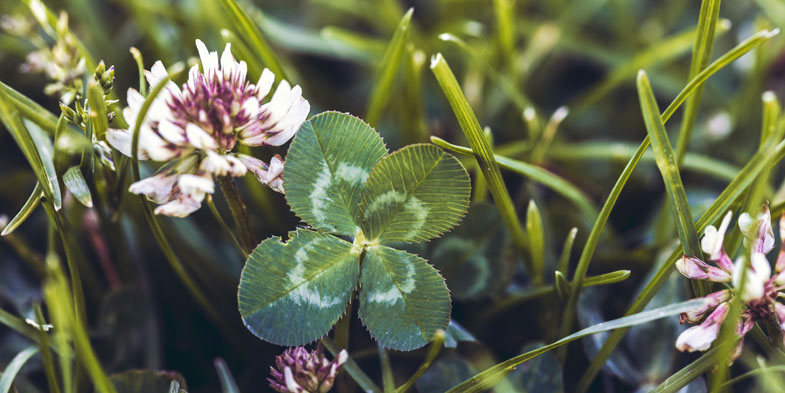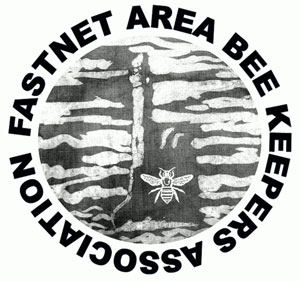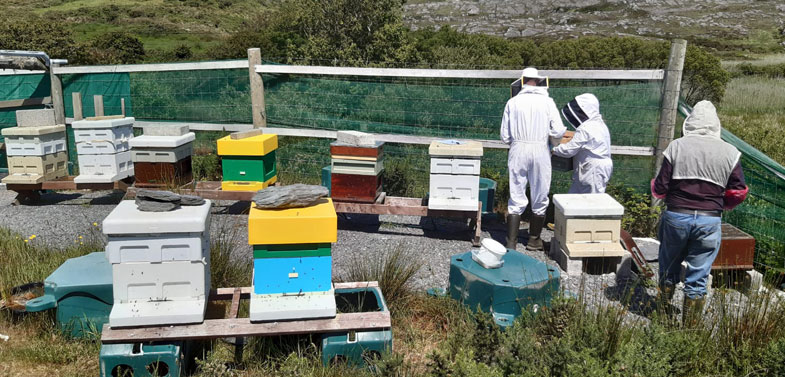Hello Beekepers!
June has brought a bit of sunshine at last and the bees were able to take advantage of the increasing temperatures and the yielding flora. The results are obvious in the hive — we see cells being filled with nectar and pollen being stored.
Tips for the Coming Month
The MAIN TASK in July is to ensure that the bees have sufficient storage space for the incoming nectar. The main sources in these parts are the white clover and the blackberry. These generally bloom from mid-June to the end of July. If the weather is warm during this period, a decent crop of honey can be expected. If the weather is bad… well, let’s remain optimistic!

The general guideline is that when the bees are covering most of the frames in the top super, it’s time to put on another one.
Do you put the empty super on top of the existing one or under the existing one?
This remains a very debated topic. Official research has concluded that honey yield may be numerically higher when bottom supering is used, but the difference is not statistically significant versus the yield for top supered colonies. I have always top supered with no problems and find it easier both for the beekeeper and the bees.
Do not wait until all of the comb in the super has been filled with stores because storage space is vital. The foraging bees return to the hive laden down with nectar. They spread the nectar in little droplets around the empty frames so as to help with the evaporation of the moisture content. Nectar can be 80 to 90% moisture and this must be evaporated down to 18% moisture content to produce honey. This is hard work for the girls. They have to fan their wings vigorously to create currents of air in the hive. Listen to the noise coming from your hive in the evening time when all bees are home. You’ll hear a tremendous sound which is often referred to as the ‘Roar of the Bees’. Sometime you can even smell the odour of the delicious honey being ripened. What a joyful experience!
By July, the swarming season should be coming to a close. If you have successfully controlled swarming or the bees have swarmed already, it is unlikely that they will swarm again. However — there’s always a ‘however’ in beekeeping — some queen have been known to swarm several times in a season, and this is why many beekeepers continue weekly checks
Hooper’s Five
Always remember ‘Hooper’s Five’ questions to ask when inspecting a colony, as mentioned last month.
- Has the colony sufficient room?
- Is the queen present and laying the expected quantity of eggs?
- a. (early in the season) Is the colony building up in size as fast as other colonies in the apiary?
or
b. (mid season) Are there any queen cells present in the colony? - Are there any signs of disease or abnormality?
- Has the colony sufficient stores to last until the next inspection?
But when the meadows shall be mown. And Summer's garlands overblown; Then come, Thou little busy bee, And let thy homestead be with me. — Charlotte Smith
Coming Up
For our members who took the ‘theory’ part of their preliminary exam: we hope to get the practical part completed for you all over the next four weeks.
Don’t forget to join us for our next Zoom meeting on July 20th at 7pm!
Happy Beekeeping!
Mairead Love & the team at FABKA

